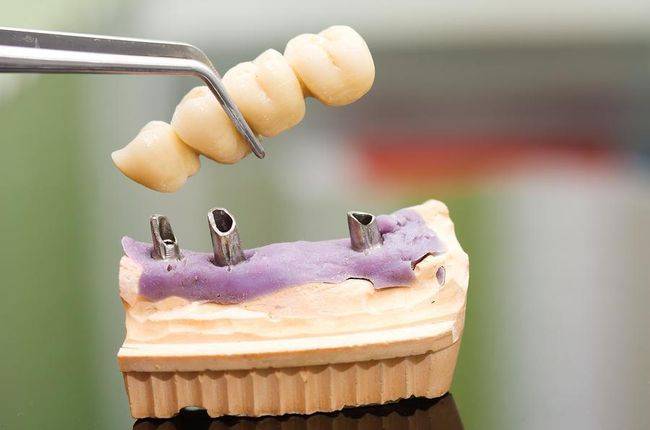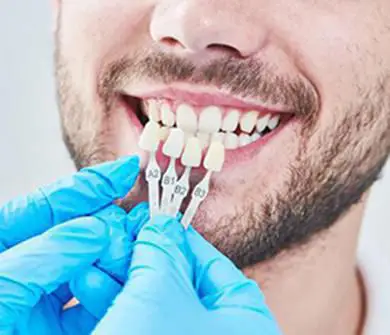Porcelain Crowns
A porcelain crown is a fixed prosthetic with a cap-like structure
that is bonded onto an existing tooth. It recreates the form and
function of an impaired tooth by replacing the entire outer
structure of the tooth down to the gum level. A dental crown
strengthens, improves appearance, and restores shape and size of a
damaged tooth.
Why is a Porcelain Crown Needed?
- Protects damaged and decayed teeth from breaking.
- Holds together the parts of cracked teeth.
- Restores worn-down teeth to their full functionality.
- Holds a dental bridge in place.
- Covers discolored teeth.
- Covers dental implants.
- Allows the dentist to make cosmetic modifications.
Procedure to get a Porcelain Crown
Getting a porcelain crown is a two-step procedure.
1. Preparing the tooth
On the first visit to your dentist, your tooth and the surrounding
tissues will be diagnosed for injury, decay, and infection. The
tooth is then prepared to receive the porcelain crown. The dentist
uses anesthesia to numb the tooth and the surrounding gum tissues.
The impaired tooth is then prepared to make room for the crown.
Any large defective areas in the tooth will be filled in (also
known as a “buildup”) prior to taking the final impression. This
impression is sent to the dental laboratory for fabrication of the
permanent crown. The prepared tooth is covered with a temporary
crown while the permanent crown is custom made in a dental lab.
2. Placement of the permanent crown
The permanent crown takes two to three weeks to get ready and
reach the dentist's
office. The permanent crown is designed in all likeness to the
neighboring teeth.
The temporary crown is removed and the permanent crown is
cemented in place. In
most cases, this can be done without getting a local numbing
injection.




